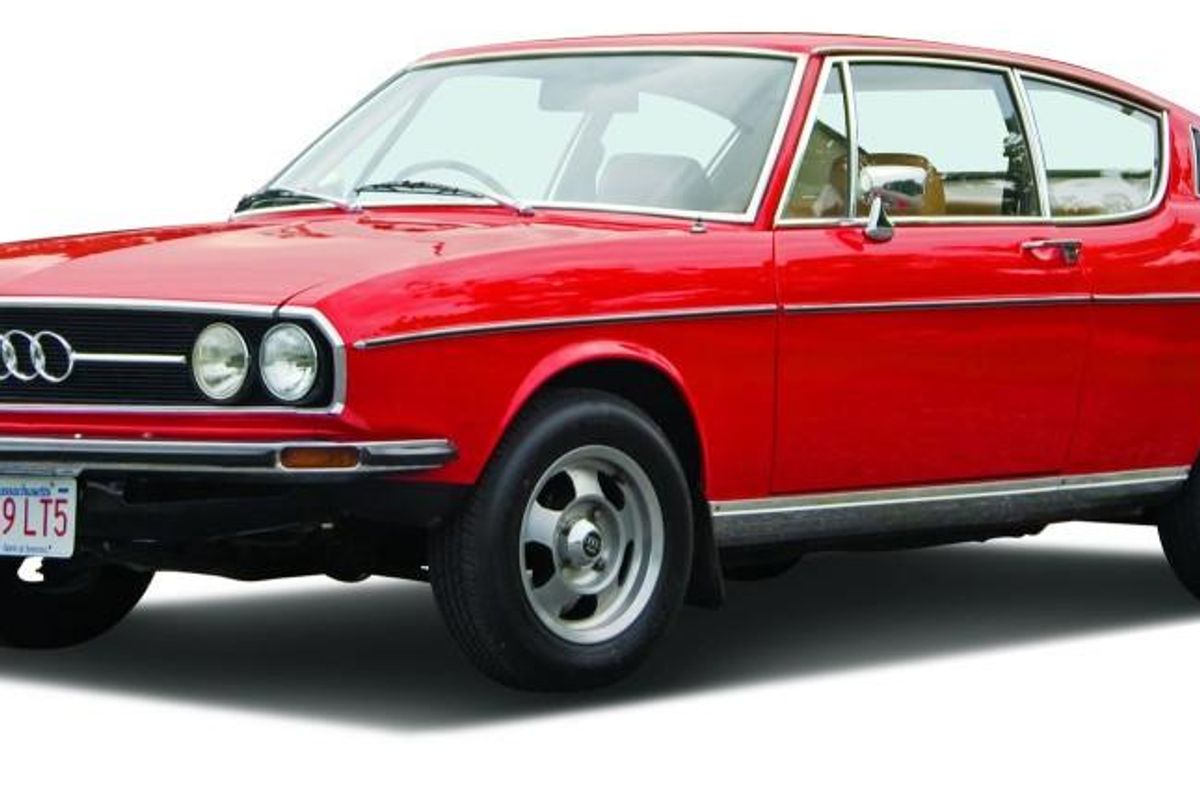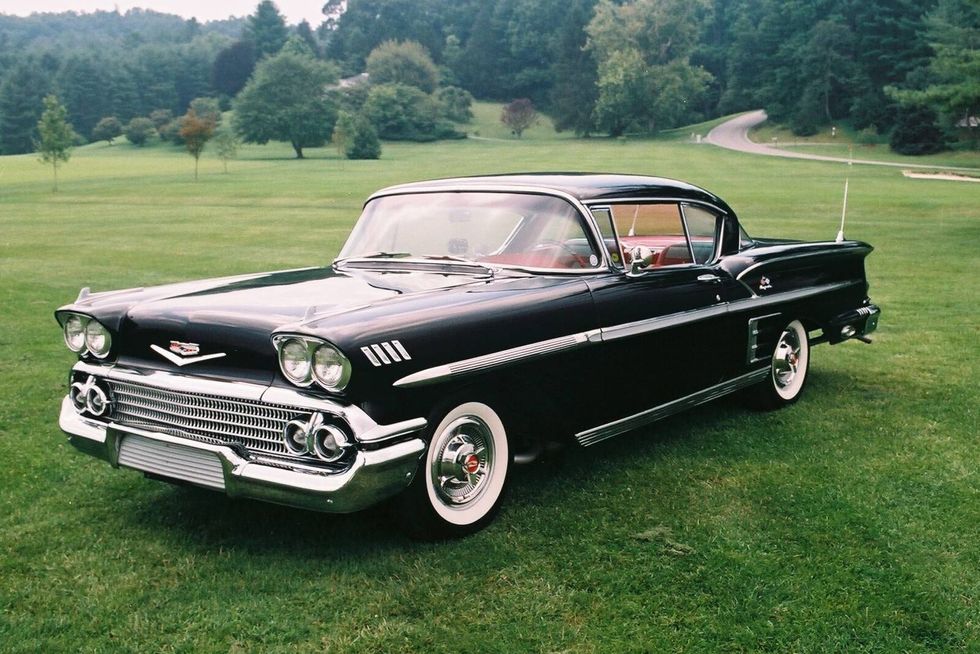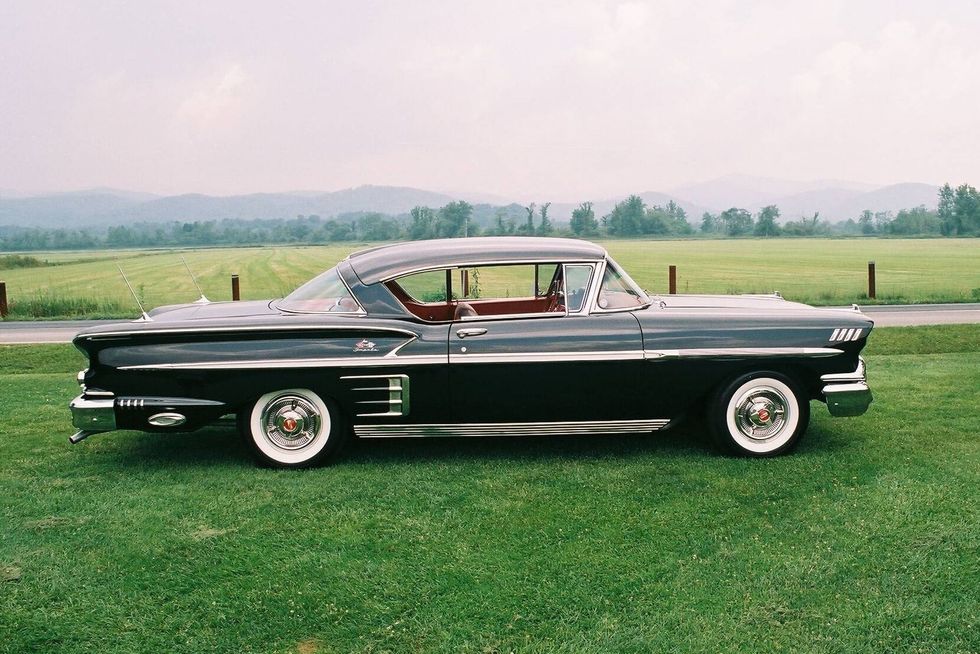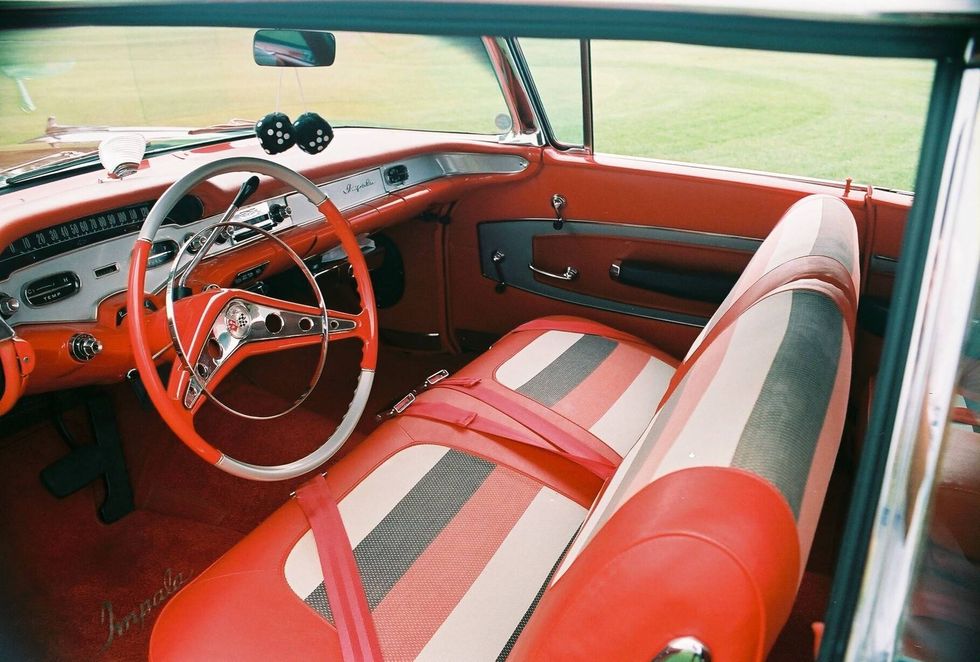1969-'76 Audi 100 Coupe S
Never sold in the USA, this low-production fastback influenced modern Audi design
09/23/2018


This year marks the 50th anniversary of the postwar rebirth of the venerable Audi marque, which was reintroduced with a four-stroke, four-cylinder development of a three-cylinder, two-stroke DKW. That 1965 Audi--its singular name--was a plain, three-box, two-door sedan, and a far cry from the sophisticated beauty that would appear as the 100 Coupé S, just four years later. This little-known car, built in limited numbers through 1976, would decades later influence what some consider this automaker's most excitingly styled sedans, those of the A7 family.
The first postwar Audi that was fully developed as such was the "C1"-chassis 100 series, a front-wheel-drive, mid-sized executive-class car that debuted in the fall of 1968. It was powered by an 80-100 hp development of the 1.8-liter four-cylinder in the contemporary Audi 90. The handsome four- and two-door 100LS/100GL sedans would be joined by this two-door fastback derivative, the 100 Coupé S, at the 1969 Frankfurt Motor Show.
The new model was built on a 100 sedan platform shortened by nine inches, and according to Audi Tradition historian Ralf Friese, its fashionable lines were penned in-house by Hartmut Warkuss, who would be Volkswagen's design chief from 1993 to 2003. "Warkuss started in Audi's design department shortly before the 100 Coupé S went on the drawing board, and he got the order to make a sporty coupe for [Audi director of development] Ludwig Kraus," Ralf told Hemmings Sports & Exotic Car. "Kraus wanted a two-door coupe because he had no children and was keen on coupes at that time. He gave the order to change the design of the two-door sedan to a fastback. If you look at the side line, you see Warkuss was clearly inspired by Maserati, but no Italians had a hand in drawing that car."
While the Coupé S was smaller than its more formally styled siblings, it shared most of their mechanicals. The aforementioned four-cylinder engine--designed by engineers at Daimler-Benz, which owned Auto Union before Volkswagen--was an overhead-valve unit that, in this application, displaced 1.9 liters, had a 10.4:1 compression ratio and twin two-barrel Solex carburetors and made 115 hp. A drop in compression and swap to a single Solex two-barrel carburetor in late 1972 meant three horsepower were lost, and it made 107 hp in its final years, although this was still enough to motivate a four-speed manual version to 62 MPH in bit over 10 seconds, and on to 114 MPH. The S's servo-assisted rear drums were shared with the sedans, but its inboard front discs--used until 1975, when these were replaced with conventional outboard discs--had larger, vented rotors that were clamped by four-piston calipers. The independent front suspension featured double wishbones, coil springs, tubular shocks and an anti-roll bar, while the solid rear axle was supported by trailing arms, a Panhard rod, anti-roll bar and struts. This model's wider tires on 14 x 5-inch wheels improved handling.
The fastback was positioned as a deluxe model--costing the contemporary equivalent of more than $5,000 by 1974--and it sported upgraded interior fittings, as well as a standard tilt steering wheel and a large tachometer in the instrument cluster. Vinyl/fabric upholstery was combined with chrome and wood trimmings for an upscale touch. The rear bench seated two in comfort, a feeling aided by this car's large rear side windows, akin to the similarly styled Fiat Dino Coupe.
Production of the 100 Coupé S was only a fraction of its C1 sedan counterparts, amounting to 30,787 out of more than 800,000, and coupe production ended one year before sedan production did. Fewer than 1,500 right-hand drive S's were assembled from knock-down kits in South Africa, including the Rallye Red 1974 example belonging to noted Audi collector Rob Petschke. Rob's car--which won the special Audi class at the August 2014 Hemmings Sports & Exotic Car Show--is one of five 100 Coupé S's in the United States, and the only right-hand-drive version. And another one of those five fastbacks was recently borrowed by Audi of America for a special display with the A7 to show where the new model's fetching roofline came from.
SPECIFICATIONS
Engine: 1,871-cc (114.2-cu.in.) OHV inline-four
Horsepower @ RPM: 107-115 (DIN) @ 5,600
Torque @ RPM: 112-118 @ 3,500
Transmission: 4-speed manual
Suspension: Independent front/live axle rear
Brakes Front disc and rear drum, power assist
Wheelbase 100.8 inches
Length 173.15 inches
Curb weight 2,385 pounds
For 1958, all-new styling at every General Motors passenger-car division ushered in big changes, just as the corporation was celebrating its 50th anniversary. It was also the final year with Harley Earl at the helm of GM design. Though the new models were longer and lower in proportion than in previous years, Earl’s signature use of excessive chrome remained unabated. That brightwork continued a trend that had dominated automotive design throughout the Fifties. For 1958, it worked seamlessly with those new designs that presented a broad departure from previous years.
Currently listed on Hemmings Auctions are a pair of faithfully restored hardtop coupes from the GM catalog from that momentous year. With wide chrome grilles surrounding four headlamps and copious brightwork including side trim the length of the body, this 1958 Chevrolet Impala Sport Coupe and 1958 Pontiac Bonneville Sport Coupe both handsomely display the heavily Earl-influenced styling that made headlines for GM.

While GM made general announcements and events around its 50th anniversary for 1958, only Pontiac incorporated the occasion into its advertising. It mattered little that the first Pontiac rolled off the assembly line in 1926 as sub-brand of Oakland. Laid out in large letters in its brochure, Pontiac’s advertising theme for 1958 carried the tagline “The boldest advance in fifty years,” also declaring “A new kind of cars is born!” Previously introduced as a well-optioned convertible version of the Star Chief in 1957, the standalone Bonneville arrived for 1958.
Promising “the first true union of sport car action with town car luxury,” the Bonneville was only produced as a pillarless hardtop Sport Coupe or a drop-top Sport Convertible for 1958. As “a modern ultimate for the man who loves cars…this steel-muscled road machine,” the Bonneville featured a 370-cu.in. V8 engine with a four-barrel carburetor and 10:1 compression as standard equipment. An optional Tri-Power setup with triple two-barrel carburetors was given the “Tempest 395” moniker for its 395 lb-ft torque rating.

As the late 1950s was peak Jet Age, aeronautical and rocket themes pervade the details of the Bonneville. The leading edge of the scalloped rear quarter panels featured a very rocket-like piece of chrome trim that extended to a point at the front of the car. On top of each front fender, just before the headlamps, sat additional chrome-plated pieces that resembled delta-wing jets with appendages that lead into creases atop the fenders like contrails from jet engines.
Finished in Burma Green with Calypso Green accents, this 1958 Bonneville Sport Coupe, one of 9,144 produced, appears to have been restored some years ago, with a fit and finish that looks to be holding up. It is equipped with the Tri-Power 370 and a four-speed Super Hydra-Matic transmission. It is additionally fitted with power windows and power brakes, along with the rare Trans-Portable radio unit that can be removed and used as a portable radio with its built-in speaker and ability to run off batteries. The seller notes no problems with the drivetrain and asserts that the transmission shifts well.


Chevrolet didn’t revel in the golden jubilee news that Pontiac touted, but its advertising in 1958 suggested that its redesigned models were “Almost too new to be true!” The ad copy also promised that “You’ll like being looked at in your beautiful ’58 Chevrolet.” Longer, lower and wider than the famous “Tri-Five” models that preceded it, the Chevrolet models somewhat mirrored what was going on at Pontiac, but with a rear-end treatment that seemed to show the previous year’s tall tailfins flopped over somewhat. In magazines ads, the words accompanying the first-year Impala Sport Coupe suggested “This sleek styles-setter promises action, gaiety, glamor—and it keeps its promises beautifully.”
Like the Bonneville nameplate, the first Chevrolet to wear the Impala badge arrived in 1958. Chevy also introduced its first big-block V8, the so-called “W” engine. For 1958, Chevrolet dubbed this 348-cu.in. engine the Turbo-Thrust V8 when equipped with a four-barrel carburetor and Super Turbo-Thrust when fitted with Tri-Power triple carburetion. Though it lacked the aviation/space themes of the Bonneville’s styling, the similarly proportioned Impala was also festooned with plenty of brightwork, from the wide grille to side spears that ran nearly from the taillights to the headlamps. Pound-for-pound, the massive wraparound bumpers probably contained the highest amount of chrome on the car.

Finished in Onyx Black with a bold Rio Red-dominated interior, this 1958 Chevrolet Impala Sport Coupe now on Hemmings Auctions features a long-term restoration that spanned the 1990s. Completed in 2001, it appears to be holding up well. The photos of the very clean undercarriage that accompany the listing tell a story that the car has been taken care since that redo. This example is fitted with the four-barrel 348 that was rated at 250 horsepower when new. Power reaches the rear axle via a two-speed Powerglide automatic transmission.
GM made some distinct design changes for 1958. With plenty of models across five passenger-car divisions, we are fortunate to have options in the collector car hobby when it comes to these chrome-laden machines. Which of these ’58 hardtop coupes would you like to cruise in?
Head on over to Hemmings Auctions to take a look and let us know.
You know when Ryan Brutt from the YouTube channel Auto Archaeology posts a new barn find video, it’s bound to be good. He’s been traveling around the country for over a decade documenting unique barn and garage finds, especially Mopars and other classic muscle cars. This 1969 Dodge Charger R/T is no exception, though he admittedly found it first on Facebook Marketplace, not his usual way of locating cool barn find cars.
The Dodge Charger in question was reportedly stored away for 30 years until recently. “Not my usual way to cool cars,” Brutt writes, adding, “This garage find has been sitting in this garage we think for 30 years. At least the neighbor who had lived there for 30 years didn't even know the car was in there.”
Under the decades of dust, it still sports the factory F5 Medium Green Poly paint and was originally equipped with a vinyl roof. Granted, the body has seen better days, and the muscle car is clearly in “barn find condition.”
1969 was the second year for the Charger R/T model. It came standard with the 440 cubic-inch (7.2-liter) Magnum, or an optional 426 cubic-inch (7.0-liter) Hemi. This example houses the 7.2-liter V8 under the hood, factory rated for 375 horsepower and 480 lb-ft of torque. It’s paired with an automatic gearbox.
1969 Charger R/T Rescued from Garage after 30 years!youtu.be
In a second video, Brutt shares the satisfaction of watching the dirt-caked Challenger receive its first wash with its new owner. Here’s what it looks like to have 30 years of grime washed away:
1969 Charger R/T Garage Find First Wash in 30 Years!youtu.be
In 1969, Chrysler built 69,142 Chargers. Of that number, 20,100 were R/Ts, according to the Standard Catalog of Chrysler 1914-2000. When the 1969 Dodge Charger R/T was first released, its original MSRP was $3,592. According to classic.com, the average used price of a 1969 Dodge Charger R/T like the one found here is $106,278, with the highest sale currently maxing out at $275,000. As of this writing, there are nearly a dozen 1969 Dodge Charger models for sale on Hemmings Marketplace.